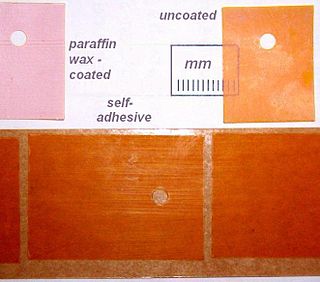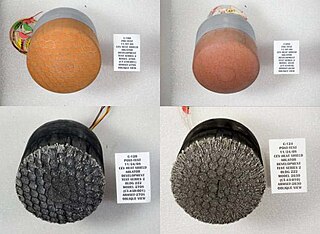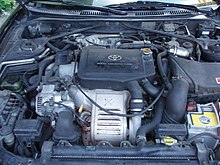
Interplanetary spaceflight or interplanetary travel is the crewed or uncrewed travel between stars and planets, usually within a single planetary system. In practice, spaceflights of this type are confined to travel between the planets of the Solar System. Uncrewed space probes have flown to all the observed planets in the Solar System as well as to dwarf planets Pluto and Ceres, and several asteroids. Orbiters and landers return more information than fly-by missions. Crewed flights have landed on the Moon and have been planned, from time to time, for Mars, Venus and Mercury. While many scientists appreciate the knowledge value that uncrewed flights provide, the value of crewed missions is more controversial. Science fiction writers propose a number of benefits, including the mining of asteroids, access to solar power, and room for colonization in the event of an Earth catastrophe.

The Space Shuttle is a retired, partially reusable low Earth orbital spacecraft system operated from 1981 to 2011 by the U.S. National Aeronautics and Space Administration (NASA) as part of the Space Shuttle program. Its official program name was Space Transportation System (STS), taken from a 1969 plan for a system of reusable spacecraft where it was the only item funded for development.

A nuclear thermal rocket (NTR) is a type of thermal rocket where the heat from a nuclear reaction replaces the chemical energy of the propellants in a chemical rocket. In an NTR, a working fluid, usually liquid hydrogen, is heated to a high temperature in a nuclear reactor and then expands through a rocket nozzle to create thrust. The external nuclear heat source theoretically allows a higher effective exhaust velocity and is expected to double or triple payload capacity compared to chemical propellants that store energy internally.

A spacecraft is a vehicle that is designed to fly in outer space and operate there. Spacecraft are used for a variety of purposes, including communications, Earth observation, meteorology, navigation, space colonization, planetary exploration, and transportation of humans and cargo. All spacecraft except single-stage-to-orbit vehicles cannot get into space on their own, and require a launch vehicle.

Atmospheric entry is the movement of an object from outer space into and through the gases of an atmosphere of a planet, dwarf planet, or natural satellite. There are two main types of atmospheric entry: uncontrolled entry, such as the entry of astronomical objects, space debris, or bolides; and controlled entry of a spacecraft capable of being navigated or following a predetermined course. Technologies and procedures allowing the controlled atmospheric entry, descent, and landing of spacecraft are collectively termed as EDL.

Thermal insulation is the reduction of heat transfer between objects in thermal contact or in range of radiative influence. Thermal insulation can be achieved with specially engineered methods or processes, as well as with suitable object shapes and materials.

A waverider is a hypersonic aircraft design that improves its supersonic lift-to-drag ratio by using the shock waves being generated by its own flight as a lifting surface, a phenomenon known as compression lift.

A rocket engine uses stored rocket propellants as the reaction mass for forming a high-speed propulsive jet of fluid, usually high-temperature gas. Rocket engines are reaction engines, producing thrust by ejecting mass rearward, in accordance with Newton's third law. Most rocket engines use the combustion of reactive chemicals to supply the necessary energy, but non-combusting forms such as cold gas thrusters and nuclear thermal rockets also exist. Vehicles propelled by rocket engines are commonly used by ballistic missiles and rockets. Rocket vehicles carry their own oxidiser, unlike most combustion engines, so rocket engines can be used in a vacuum to propel spacecraft and ballistic missiles.

VentureStar was a single-stage-to-orbit reusable launch system proposed by Lockheed Martin and funded by the U.S. government. The goal was to replace the Space Shuttle by developing a re-usable spaceplane that could launch satellites into orbit at a fraction of the cost. While the requirement was for an uncrewed launcher, it was expected to carry passengers as cargo. The VentureStar would have had a wingspan of 68 feet (20.7 m), a length of 127 feet (38.7 m), and would have weighed roughly 1000 t.

Kapton is a polyimide film used in flexible printed circuits and space blankets, which are used on spacecraft, satellites, and various space instruments. Invented by the DuPont Corporation in the 1960s, Kapton remains stable across a wide range of temperatures, from 4 to 673 K. Kapton is used in electronics manufacturing, space applications, with x-ray equipment, and in 3D printing applications. Its favorable thermal properties and outgassing characteristics result in its regular use in cryogenic applications and in situations where high vacuum environments are experienced.

Carbon fibre reinforced carbon (CFRC), carbon–carbon (C/C), or reinforced carbon–carbon (RCC) is a composite material consisting of carbon fiber reinforcement in a matrix of graphite. It was developed for the reentry vehicles of intercontinental ballistic missiles, and is most widely known as the material for the nose cone and wing leading edges of the Space Shuttle orbiter. Carbon-carbon brake discs and brake pads have been the standard component of the brake systems of Formula One racing cars since the late 1970s; the first year carbon brakes were seen on a Formula One car was 1976.

The Space Shuttle thermal protection system (TPS) is the barrier that protected the Space Shuttle Orbiter during the searing 1,650 °C (3,000 °F) heat of atmospheric reentry. A secondary goal was to protect from the heat and cold of space while in orbit.

A reentry capsule is the portion of a space capsule which returns to Earth following a spaceflight. The shape is determined partly by aerodynamics; a capsule is aerodynamically stable falling blunt end first, which allows only the blunt end to require a heat shield for atmospheric entry. A crewed capsule contains the spacecraft's instrument panel, limited storage space, and seats for crew members. Because a capsule shape has little aerodynamic lift, the final descent is via parachute, either coming to rest on land, at sea, or by active capture by an aircraft. In contrast, the development of spaceplane reentry vehicles attempts to provide a more flexible reentry profile.

The Space Shuttle orbiter is the spaceplane component of the Space Shuttle, a partially reusable orbital spacecraft system that was part of the discontinued Space Shuttle program. Operated from 1977 to 2011 by NASA, the U.S. space agency, this vehicle could carry astronauts and payloads into low Earth orbit, perform in-space operations, then re-enter the atmosphere and land as a glider, returning its crew and any on-board payload to the Earth.

An aeroshell is a rigid heat-shielded shell that helps decelerate and protects a spacecraft vehicle from pressure, heat, and possible debris created by drag during atmospheric entry. Its main components consist of a heat shield and a back shell. The heat shield absorbs heat caused by air compression in front of the spacecraft during its atmospheric entry. The back shell carries the load being delivered, along with important components such as a parachute, rocket engines, and monitoring electronics like an inertial measurement unit that monitors the orientation of the shell during parachute-slowed descent.
A reusable spacecraft is a class of spacecraft that have been designed with repeated launch, orbit, deorbit and atmospheric reentry in mind. This contrasts with conventional spacecraft which are designed to be expended after use. Examples of reusable spacecraft are spaceplanes and space capsules like the SpaceX Dragon. Such spacecraft need mechanisms to prevent the disintegration of the spacecraft and its occupants/cargo during reentry. Failure of such systems may be catastrophic, as what happened in the Space Shuttle Columbia disaster.

AVCOAT 5026-39 is a NASA code for a specific ablative heat shield material created by Avco . It is an epoxy novolac resin with special additives in a fiberglass honeycomb matrix. In fabrication, the empty honeycomb is bonded to the primary structure and the resin is gunned into each cell individually.

In spacecraft design, the function of the thermal control system (TCS) is to keep all the spacecraft's component systems within acceptable temperature ranges during all mission phases. It must cope with the external environment, which can vary in a wide range as the spacecraft is exposed to the extreme coldness found in the shadows of deep space or to the intense heat found in the unfiltered direct sunlight of outer space. A TCS must also moderate the internal heat generated by the operation of the spacecraft it serves.
Silicone Impregnated Refractory Ceramic Ablator, or SIRCA, is a lightweight ceramic ablative material, often used in thermal protection systems to protect parts of launch vehicles and spacecraft from very high temperature heat sources.

Low-Earth Orbit Flight Test of an Inflatable Decelerator (LOFTID) was a NASA mission to test inflatable reentry systems. It was the first such test of an inflatable decelerator from Earth-orbital speed.





















